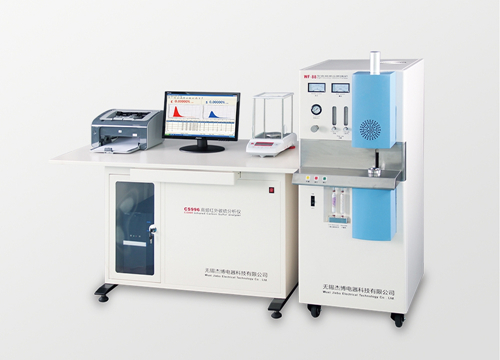The interference factors of infrared carbon and sulfur analyzer are generally considered to come from three aspects: first, the defect of the instrument structure; second, the use of oxygen, reagents, and the sample itself; In practical use, the interference mainly comes from the effect of water on the accurate determination of sulfur.
Infrared carbon and sulfur analysis is to make the carbon and sulfur in the material burn in oxygen to form CO2 and SO2. The carrier gas oxygen is sent to the carbon detection tank and the sulfur detection tank, respectively. Since CO2 and SO2 absorb infrared light of a specific wavelength, the content of C and S in the material is calculated based on the relationship between light intensity and concentration.
The infrared absorption wavelength of CO2 is 4.25 μm, and the infrared absorption wavelength of SO2 is 7.45 μm. Water has strong absorption in the infrared spectral region, and the absorption peaks are located at two wavenumber ranges of 1670 ~ 1600cm-1 and 3600 ~ 3000cm-1, which partially overlap with the absorption peaks of SO2, thereby causing dry interference. Expressed as high sulfur value or bad combustion curve, tailing occurs, and the integration time is extended until it can't be reset to zero.
In the actual reaction of the infrared carbon and sulfur analyzer, the hygroscopic agent is saturated, and the water absorbs SO2 to generate H2SO3 and then decomposes again, causing unstable interference; the water-containing substances (including crystal water) burn out and emit water. This interference can only be eliminated by absorbing moisture from the hygroscopic agent. Correctable interferences include: crucible flux, extremely low and constant moisture content in oxygen. The desiccant is in an unsaturated state. At this time, the water can be removed by a chemical method through a hygroscopic agent and an oxygen purification furnace.
It is known from a large number of experiments that the interference of the water factor mainly comes from oxygen. In more serious cases, the integration time is extended until it cannot be ended. But after the combustion is over, the tail is basically horizontal, so the moisture interference is almost constant for a certain period of time.